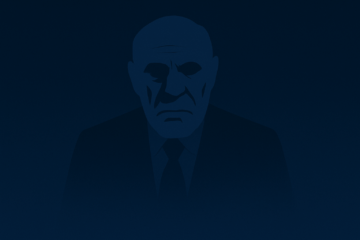Introduction
This article will ostensibly be a distillation and discussion of the paper ‘Ex-Dividend Arbitrage in Option Markets’ by Hao, Kalay and Mayhew. [1] They find that a significant fraction of American call option holders do not behave in line with rational exercise policy regarding dividends, leaving money on the table for option writers and creating an exploitable inefficiency which market participants with low transaction costs (e.g., market makers) can hope to trade according to the method laid out in the rest of this article.
There exists a certain deadline, before the issuing of a dividend, such that only those that buy shares of the firm before this date will be considered shareholders for the subsequent dividend, and thus receive their payment. We refer to this day as the “last cum-dividend day”, after this, the stock will be “ex-dividend”.
The Method
Holders of equity call options are not entitled to receive the cash dividend paid to owners of the underlying stock, unless they exercise the calls prior to the ex-dividend date. Consequently, some owners of American-style call options have an incentive to exercise immediately before the stock goes ex dividend. Exercise on the last cum-dividend day will be optimal if the value of the dividend exceeds the “time value” remaining in the option after the dividend. This is most likely to be the case for deep-in-the-money and short-term call options.
The stock price on the last cum-dividend will be greater than the expected ex-dividend price by the amount of the dividend: ![]() The price of an ex-dividend call is:
The price of an ex-dividend call is: ![]() where K is the strike price of the option and
where K is the strike price of the option and ![]() is the ex-dividend time value. If
is the ex-dividend time value. If ![]() an option buyer would perform optimally if they exercised their option before the last cum dividend day, since the time value, which is forgone with early exercise, is worth less than the dividend amount.
an option buyer would perform optimally if they exercised their option before the last cum dividend day, since the time value, which is forgone with early exercise, is worth less than the dividend amount.
If all market participants exercised optimally, no profit opportunity would arise for arbitrageurs because every option in the market would be exercised. However, empirical evidence suggests that suboptimal exercise occurs with some frequency: this un-captured value for the holder of a given contract: ![]() , becomes a gain for option writers as the price of the option will decrease along with the stock price ex-dividend, furthermore if the writer has written a covered call, they will receive the dividend from the underlying stock.
, becomes a gain for option writers as the price of the option will decrease along with the stock price ex-dividend, furthermore if the writer has written a covered call, they will receive the dividend from the underlying stock.
We can exploit the random allocation algorithm employed by clearinghouses to assign option exercises to profit from this inefficiency (counterparties are selected randomly at assignment) in the following way:
Two traders write each other Q/2 calls establishing a total of Q perfectly offsetting long and short positions (which are not netted – that is to say opening a long position does not necessarily close the short position though it negates the PnL if rational exercise occurs across the market), this is riskless and requires no capital (just like we like our arbitrage.) If we denote open interest by H, this means that open interest after the trade will be H+Q.
The two then exercise all of their long positions before market close on the last-cum-dividend day, converting their calls to stock. If all the OI exercised, our two traders would be assigned a percentage ![]() of those positions, thereby exactly cancelling out their exercised long positions. However, if we assume some that some fraction
of those positions, thereby exactly cancelling out their exercised long positions. However, if we assume some that some fraction ![]() of OI won’t be exercised optimally, our traders can expect to receive the dividend from some of their exercised long call positions resulting in a combined expected arbitrage profit of:
of OI won’t be exercised optimally, our traders can expect to receive the dividend from some of their exercised long call positions resulting in a combined expected arbitrage profit of: ![]() , where C is the marginal cost of trading.
, where C is the marginal cost of trading.
We’d like to note that there is also profit associated with remaining short some calls that should decrease in value with the stock going ex-dividend, but this also depends on the absence of informational shocks in the market at that time and so will not form part of our arbitrage PnL equation.
At this point, the arbitrageurs can either wait for the option to expire (feasible in the scenario where this trade is likely to be lucrative as the calls would be short term ITM, meaning they wouldn’t have to wait long to get exercised and get rid of their stock, avoiding transaction costs) or they could simply cover their short option position and sell their stock, though this entails transaction costs and transaction costs are critical limits to small arbitrage opportunities, which is why this strategy is mainly executed by market makers who have their transaction fees capped on several exchanges (such as the PCX and PHXL), meaning that they effectively only need to pay fees to the clearinghouse and can trade larger volumes as a result.
The optimal amount Q that the market makers should trade is obviously proportional to the fraction of OI that goes unexercised ![]() ,the OI H, and the excess of the dividend over the time value
,the OI H, and the excess of the dividend over the time value ![]() , and inversely proportional to marginal transaction costs C. The exact expression is:
, and inversely proportional to marginal transaction costs C. The exact expression is: ![]()
Empirical Findings and Implications
The paper finds that in the exchange-traded US equity option market more than 40% of the calls that should have been exercised remained unexercised from 1996–2006 and that the trading activity described above generates substantial trading volume in call options, in some cases large enough to significantly distort statistics of interest to investors such as average daily volume (giving the appearance of liquidity which is not actually there) and put-call ratios.
Footprints of this activity are readily evident in large spikes in call volume observed immediately prior to ex-dividend days. Overwhelmingly, this volume spike was composed of trading in call options by market makers.
A regression of volume against potential profit and the presence of an arbitrage opportunity finds a positive relationship with an adjusted R-squared of 0.1748. As hypothesized, the trading volume of options providing profit opportunities on the last cum-dividend day increases with the potential profit.
[1] https://en-coller.tau.ac.il/sites/nihul_en.tau.ac.il/files/RP_170_Kalay.pdf



1 Comment
Lorenzo · 31 October 2021 at 21:33
Interesting! However I believe you would need to act as 2 different persons/beneficial owners , otherwise the exchange/clearing broker would collapse your positions and you would be just flat. So the idea still holds, but capital-wise not exactly zero